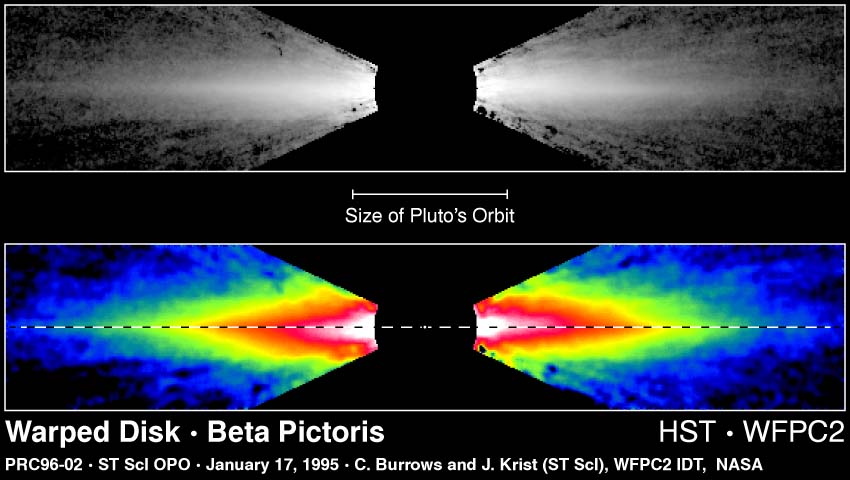
Beta Pictoris
This image from NASA's Hubble Space Telescope shows for the first time the inner region of a 200-billion mile diameter dust disk around the star Beta Pictoris. This region has long been hidden from ground-based telescopes because of the glare from the central star. The disk is slightly warped. If the warp were there when the star formed, it would long since have flattened out, unless it is produced and maintained by the gravitational pull of a planet. The suspected planet would dwell inside a five-billion mile diameter clear zone inside the inner edge of the disk. Top This is a visible light image of the disk, which appears spindle-like because it is tilted nearly edge-on to our view. The disk is made up of microscopic dust grains of ices and silicate particles, and shines by reflected light from the star. This image indicates that the central clearing is occupied by one or more planets which agglomerated out of the disk and then swept out smaller particles. The bright star, which lies at the center of the disk, is blocked out in this image. Bottom False-color is applied through image processing to accentuate details in the disk structure. Hubble reveals that the pink-white inner edge of the disk is slightly tilted from the plane of the outer disk (red-yellow-green) as identified by a dotted line. A simple explanation is that a large planet is pulling on the disk. It is not possible to see the planet directly because it is close to the star, and perhaps a billion-times fainter. This image was taken with the Wide Field Planetary Camera 2 in January 1995. The star is located 50 light-years away in the southern constellation Pictor (Painter's Easel). Beta Pictoris is a main sequence star, slightly hotter than our Sun.
- X




























